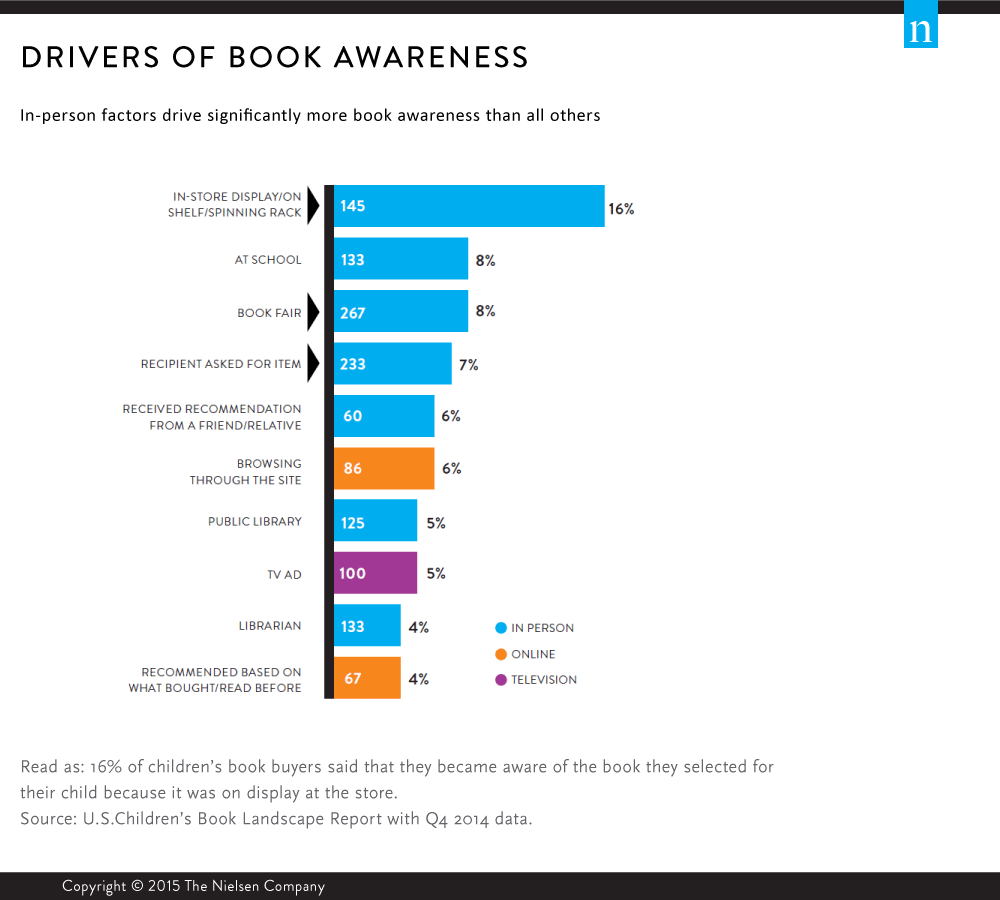Despite the increasing penetration of mobile devices and complementary multi-screen consumption trends, U.S. consumers prefer discovering and buying kids’ physical books—and in person.
According to Nielsen’s most recent U.S. Children’s Book Landscape Quarterly report, only 10% of kids’ books purchased in fourth-quarter 2014 were e-books, compared with 19% of all books. While the gap between print and e-book purchases is slowly shrinking, print still dominates, and how these books are discovered and purchased also shows just how important the personal touch really is.
Across the children’s book landscape, consumers discover the most books from in-store displays. On average, consumers “discovered” 71% of kids’ books by seeing them on a bookstore shelf or display table. Given that most discovery and purchase incentives come directly from kids’ requests, it’s somewhat surprising that check-out counters, the proverbial retail “gauntlet,” have a relatively negligible impact on awareness accounting for just 1% of children’s books awareness. Children’s book buyers are also 167% more likely to discover new titles at book fairs than the average book buyer. They also discover more titles through recommendations from librarians or teachers.

When it comes to purchase, price is the No. 1 decision driver. But it’s not all about the Benjamins. Children’s book buyers are 125% more likely to buy a book when kids ask for it, and they’re 44% more likely to make a purchase decision based on cover art. Compared with all book buyers, children book buyers are more likely to buy a children’s book with another item. And what gets purchased alongside a children’s book? Another children’s book.
What does this mean for publishers and authors? Good old-fashioned in-store placement can’t be ignored. And neither can book fair opportunities and connecting with librarians and teachers. Book publishers need to continue to invest in these areas. With consumers readily purchasing books in multiples, publishers would benefit from exploring bundling opportunities. Finally, while the gap between e-book sales and print sales is shrinking, overall the sales trends indicate a slow-down in growth, perhaps indicating a matured market for kids’ e-books.
For additional insight, download Nielsen’s most recent U.S. Children’s Book Landscape report.
Additionally, Nielsen’s 2015 Children’s Book Summit on Sept. 16 will dive deeper into the children’s book market—who your customers are, what they love and how to engage with them.



